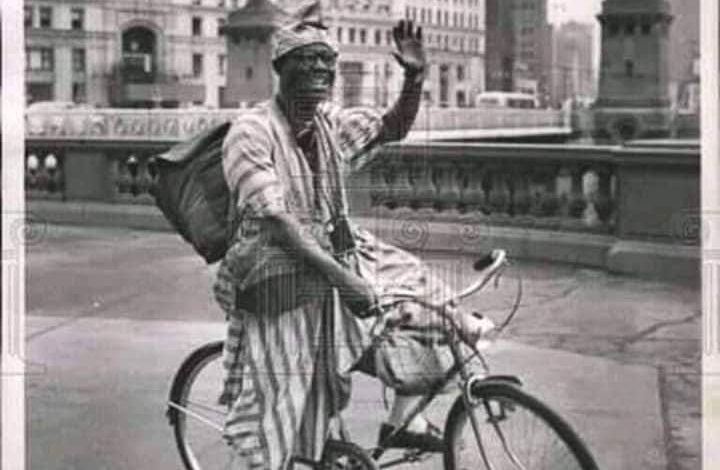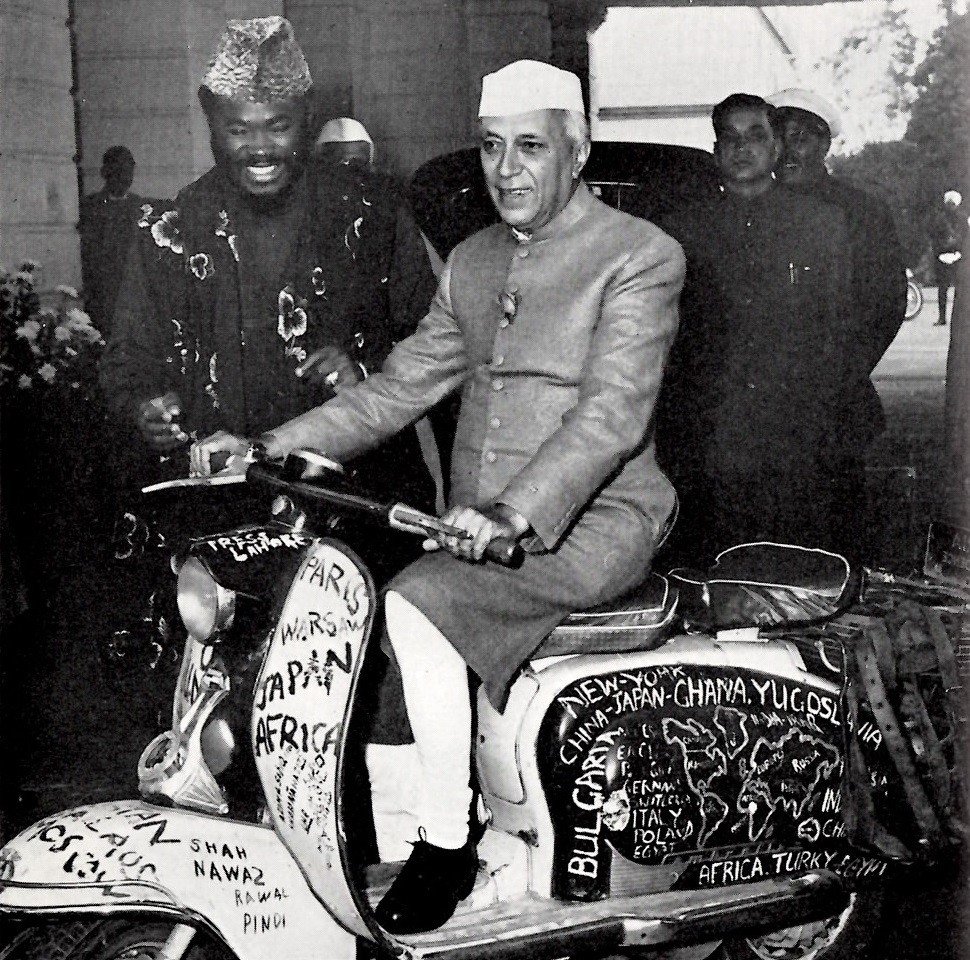If you are someone who travels a lot and enjoys it, that a week doesn’t go without you having to travel, then you must be familiar with people calling you “Ajala Travel.” On one or more occasions, people must have given you a compliment or eulogized you with a sigh or a thumbs up with ‘hmm… you can travel for Africa, M.r Ajala travels” and then with a nod to indicate that you will never listen even if they make an attempt to talk you out of traveling.
You must be wondering why the name ‘Ajala’ best suits the context of your love for traveling- many people grew up knowing that, but do not know the significance of the character and the story behind the context. Even though traditional history ignores Olabisi Ajala, the phrase “Ajala the traveler,” a moniker for the free-spirited and adventurous in Southwest Nigeria, ensures that he will never be forgotten.
In this piece, Naijabiography narrates the story behind the name ‘Ajala Travels’, who Ajala was and why people use him in that context, and of course, why people call you Ajala travels.
Once upon a time, there was a boy called Moshood Adisa Olabisi Ajala, popularly known in his hometown as Ọlábísí Àjàlá. Ajala was a Nigerian journalist, travel writer, actor, and later a Lagos socialite. He is known for his adventures in Israel, Egypt, Palestine, India, the United States, and other countries. His lone book, An African Abroad, was released in 1963 and chronicled his travel adventures. His name is now synonymous with ‘travel’ in Nigeria. In Nigeria, his name is still used as a slang term to ridicule people who can’t seem to remain still. They’re known as ‘Ajala the Traveller.’
History of Ajala
Olabisi Ajala was born to a Nigerian family in Ghana in 1929 or 1934. With roughly thirty offspring and four marriages, it was a polygamous family. The twenty-fifth was Olabisi. His family relocated to Nigeria when he was a child. In Lagos, he attended Baptist Academy, and in Ibadan, he attended Ibadan Boys’ High School.
In 1952, he traveled to the United States at the age of eighteen to study pre-medicine at the University of Chicago. He was the first black student in the Delta Upsilon Pi fraternity, a co-ed Greek-letter organization, at the time. Later, he transferred to Roosevelt University (formerly known as “Roosevelt College”) to pursue a degree in psychology.

Ajàlá dreamed of a cross-country bicycle ride from Chicago to Los Angeles. The journey according to him was 28 days, and he travelled 2,280 miles. He set out on his journey on June 12th, 1952, and arrived at Los Angeles City Hall on July 10th. He received numerous honors as a result of the journey, including publicity in the main publications of the day. Ajàlá was greeted by Los Angeles mayor Fletcher Bowron when he arrived two days ahead of schedule. History has it that he never returned to Chicago.
He became a minor celebrity in Los Angeles and did numerous interviews. He was later cast in the film White Witch Doctor, produced by 20th Century Fox and based on the 1950 novel by Louise A. Stinetorf. Ronald Reagan, whom he had met three years before, had offered him the recommendation. He was also cast in the film “Killer Ape,” but he never started filming.
Many women surrounded him because of his stature. One of them was Myrtle Basset, a Chicago nurse who gave him his first child, ládipupo Andrei Ajala, who was born on January 21, 1953. In Yoruba, the word ládipupo means “wealth has multiplied.” Ajàlá, on the other hand, had initially disputed the fatherhood of the child. When he refused to show up in court to take the blood test he had requested, the courts ordered him to pay ten dollars per week to the mother. Olaábisi then vanished, and ládipupo was not seen again until 1976 when he had become a pianist. Ládipupo passed away on January 19, 2020.
Why Ajala Travels?
He was sentenced to a year suspended jail term later after the court ruling, following a series of run-ins with American immigration for minor violations such as issuing fake checks. He was also ordered to be deported to Nigeria because he had abandoned his schoolwork—he had reportedly gone to Santa Monica Junior College but was not keeping up with his studies. He objected to the deportation order, claiming that he would be executed by his father in accordance with tribal custom. First, he scaled an 80-foot radio tower, threatening to commit suicide if the order was not overturned. He leapt down from around fifteen feet after nearly 13 hours and hurt his back. He was eventually deported, albeit to London rather than New York.
After some months, Ajala returned to the United States in December 1954 with a new wife, Hermine Aileen, a New York model. They made their home in Chicago. She divorced him in 1955 after accusing him of philandering and adultery, which he denied. He remarried in December 1955, this time to Joan Simons, a 19-year-old London actress.
Ajàlá embarked on a “round-the-world” journey from London on April 27, 1957. These would serve as the foundation for his biography, “An African Abroad,” published in 1963 with a preface by Tom Mboya. He intended to travel to 40 different countries but later toured about 87 countries on a motorcycle in the 1950s.
He wore his agbada – a Yoruba flowing gown – and a cap in every location he visited, a combination characterized as “elaborately patterned robes with a felt-like headdress to match.” Ajàlá travelled to India, the Soviet Union, Iran, Jordan, Israel, Palestine, Egypt, and eventually Australia in order to write the book.
He toured them all on his Vespa scooter, which was adorned with notable autographs from the celebrities he had met. He met many more people throughout his tour around the world, including Jawaharlal Nehru, Golda Meir, Abubakar Tafawa Balewa, Gamal Abdel Nasser, the Shah of Iran, and Nikita Khrushchev. Poland, Germany, Prague, Czechoslovakia, Austria, Yugoslavia, Albania, Bulgaria, Romania, Hungary, and Turkey were among the countries he visited.
If Mungo Park toured the African coast to “discover” the Niger River and Ferdinand Magellan circumnavigated the globe to prove the planet was spherical, Ajala travelled the globe to show the world African culture and Nigerians’ can-do élan.
As a result, Ajala represents Africa in the same way that Christopher Columbus, Vasco da Gama, Ferdinand Magellan, James Cook, and Marco Polo represent Europe, and Ibn Battuta al-Tanji and Zheng. He represented Asia, and his motorcycle was his compass, which he used to cross borders and confront racial intolerance’s harshness.
However, he also had run-ins with the authorities, first in the Soviet Union, when he was accused of attempting to assassinate Nikita Khrushchev by being too close to him in public, and again on the Israel-Palestine border, where he was almost shot for speeding across without authorization.
Later, the book was written as both a travelogue and a journalistic work. He shared his thoughts on how people lived in the countries he visited, as well as his thoughts on the political situation in Israel and Palestine and the world leaders he met.

Ajala Travel in Nigeria
Ajàlá afterward returned to Nigeria and became a well-known socialite. He went on to serve as an entertainment promoter and publicist for artists such as Sikiru Ayinde Barrister. They later had a squabble, which resulted in the end of their relationship.
Ebenezer Obey, for example, lauded him in song with the lines “You’ve visited every country on the planet. Ajàlá went on a round-the-world trip…” The phrase “Ajàlá travels” became associated with wanderlust and extended travel after it. This is why most Nigerians imbibed the phrase and instead of saying ‘you travel a lot they say “ájala travel.”
Because Ajala was influential, he became every lady’s man and he had women all around him from one state to another. In Sydney where his book was published, he married Joan and had three children with her. In subsequent years, especially when he dwelled in Nigeria, he married Alhaja Sadé and was said to have had children with a few more women in Nigeria.
Although he sustained his legacy and he’s been remembered for his ventures and adventures with his scooter, Ajàlá had a stroke in the early days of 1999 while living in Lagos and did not obtain sufficient treatment. Thus, on February 2, 1999, he died of a stroke, but his children are in different parts of the world.





